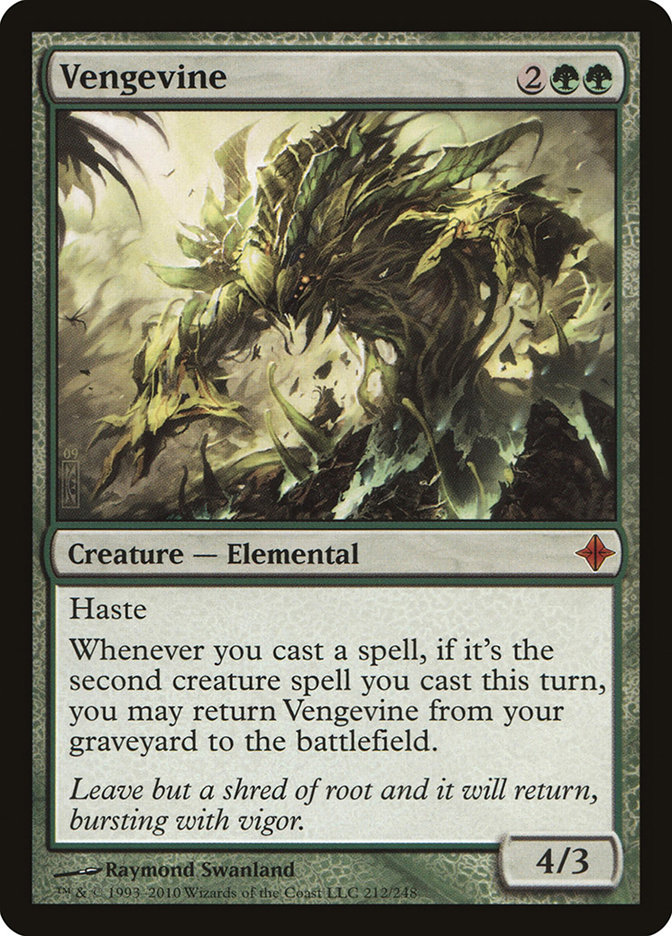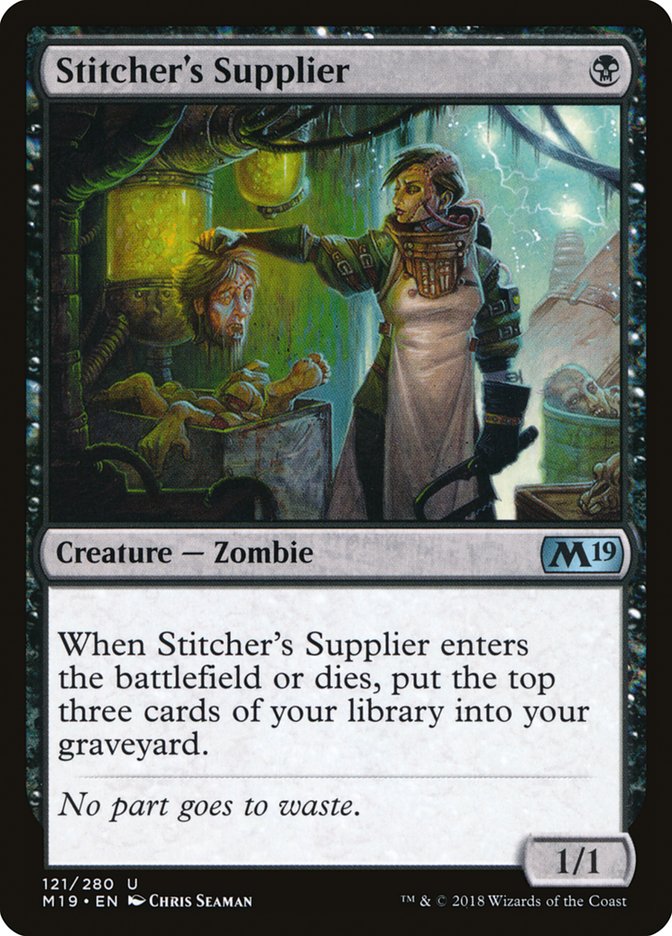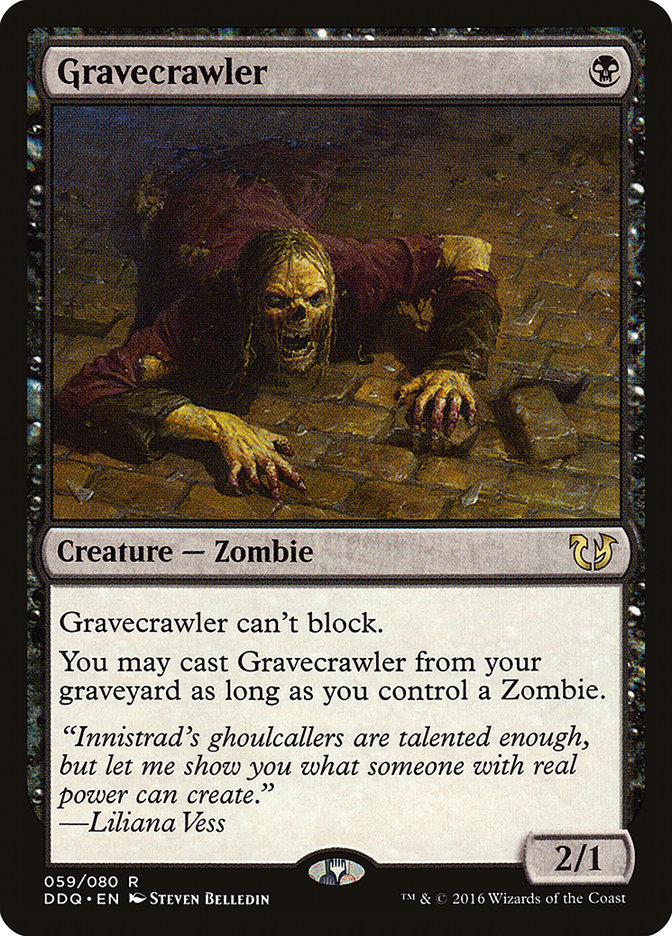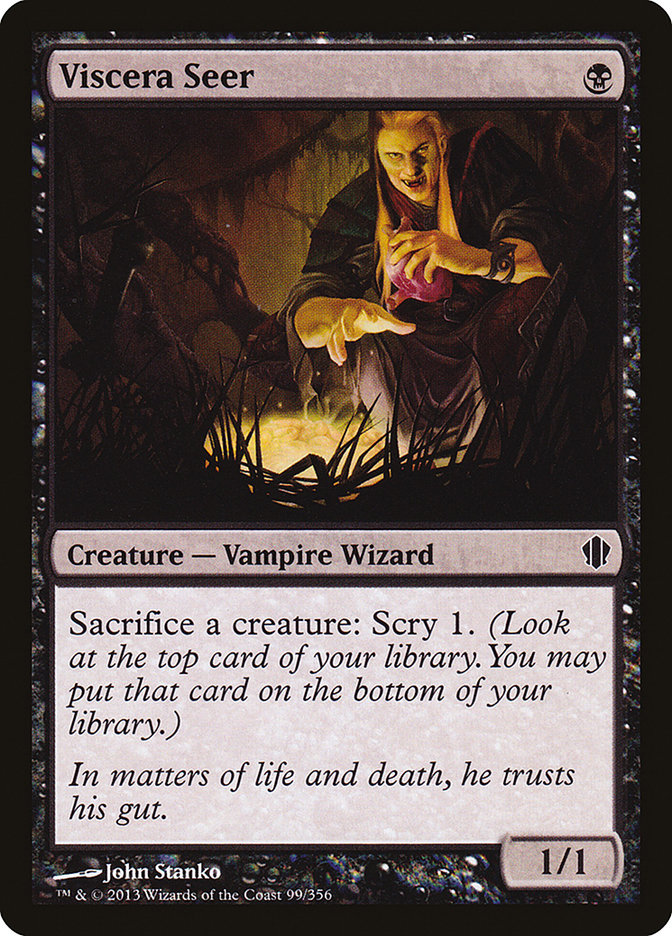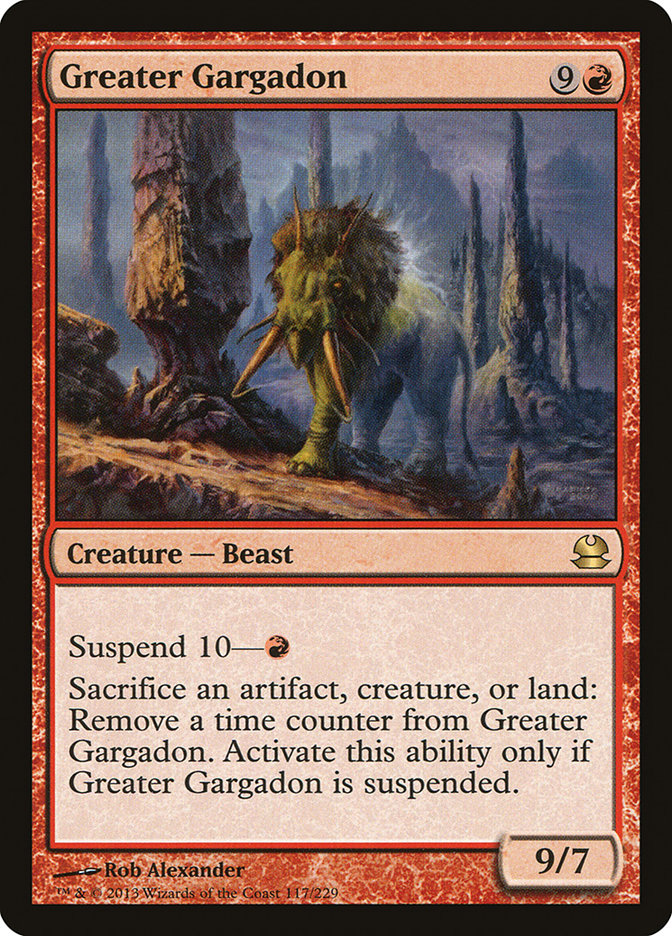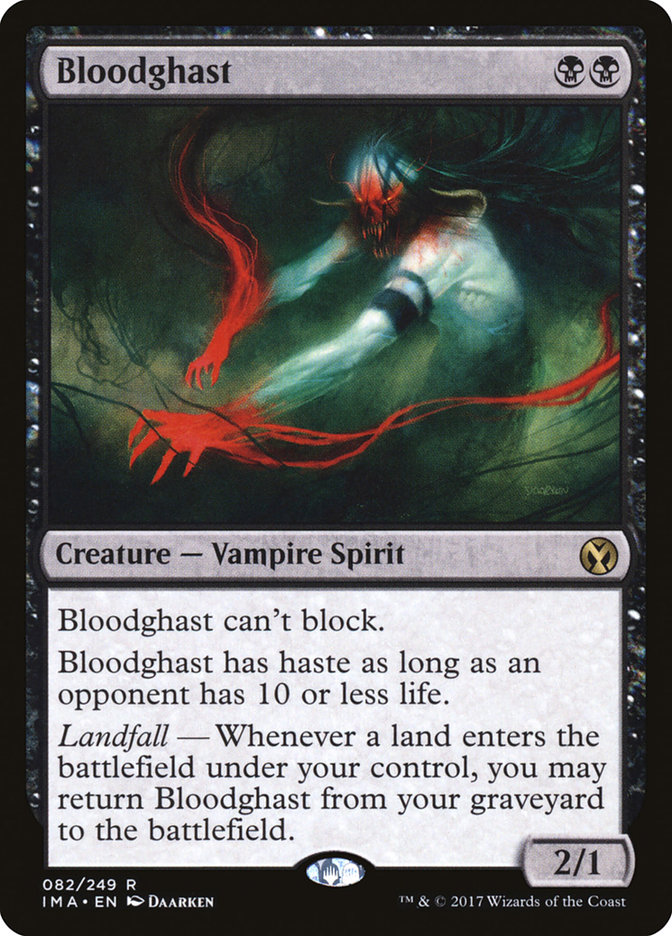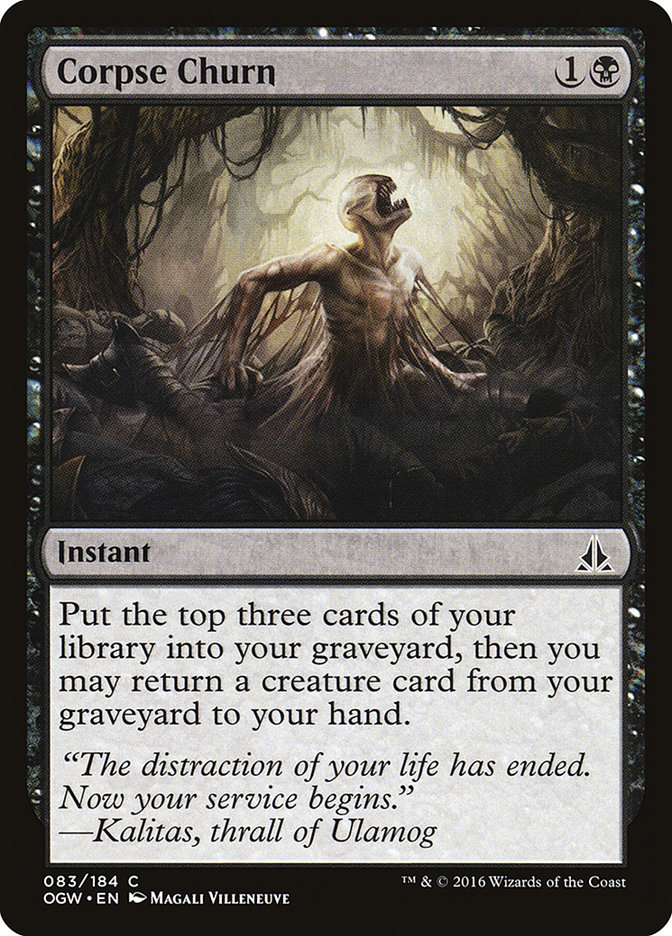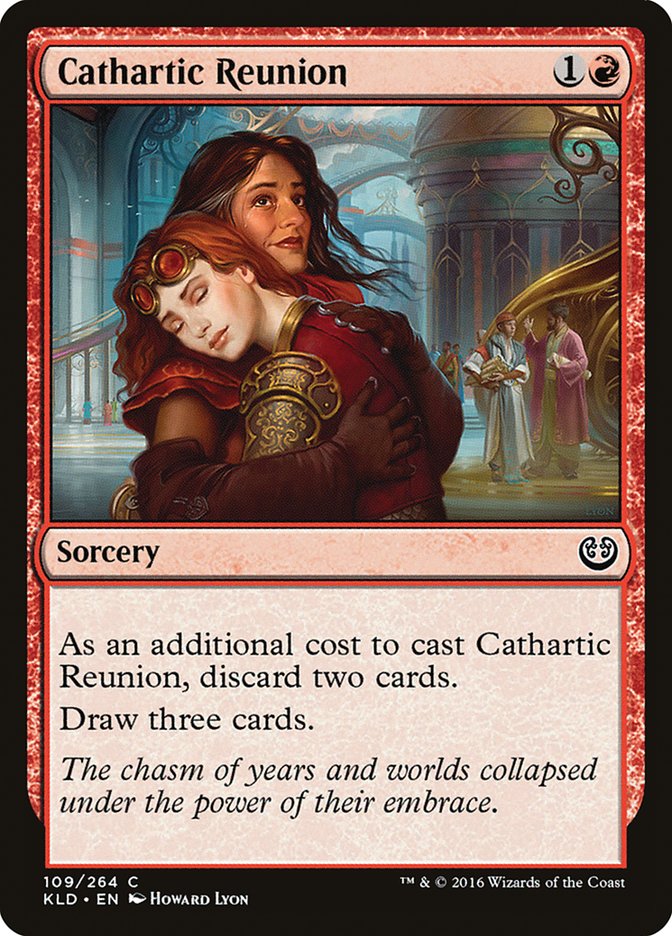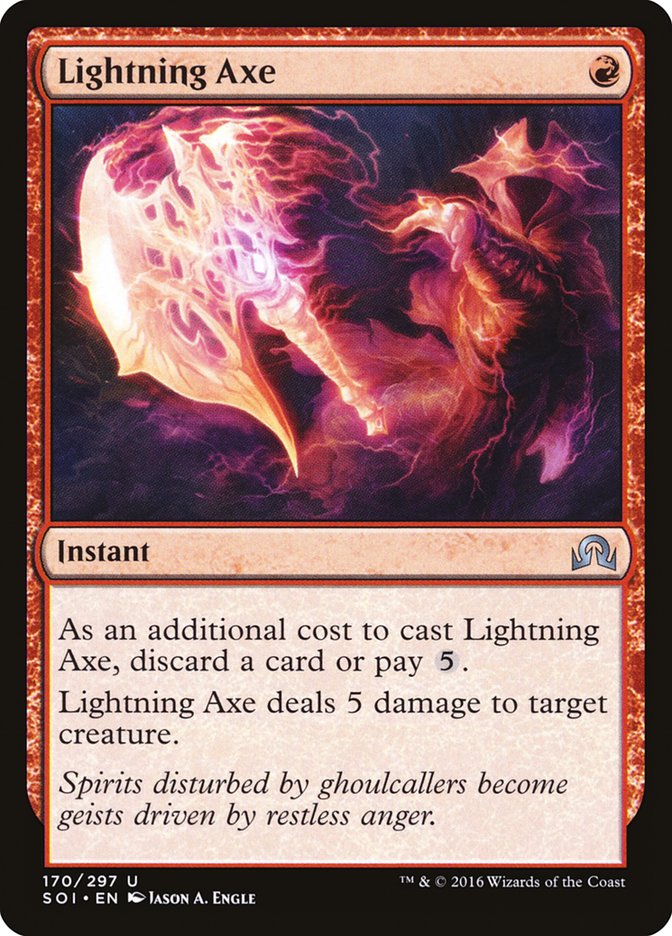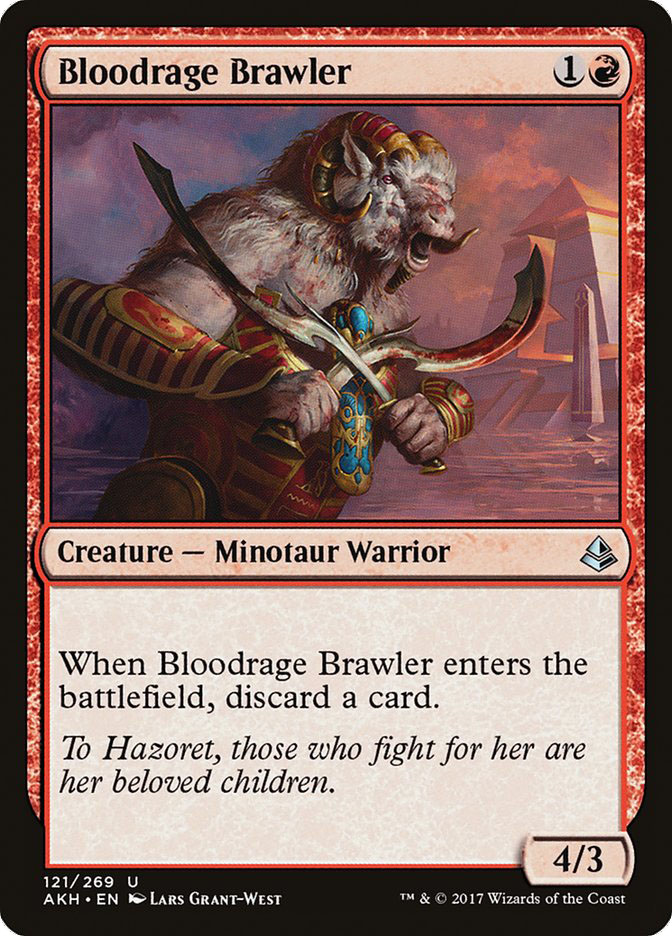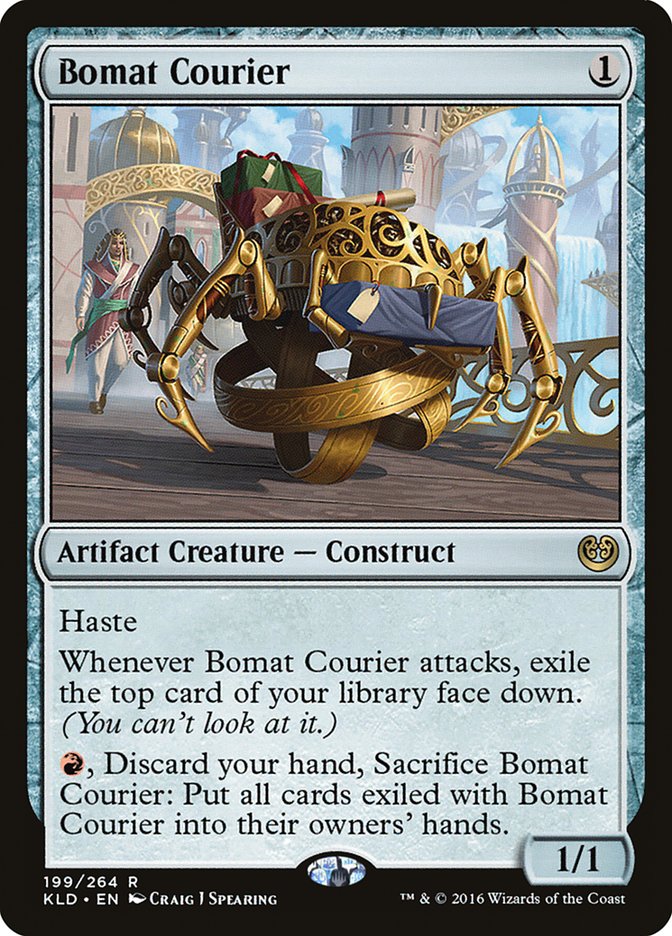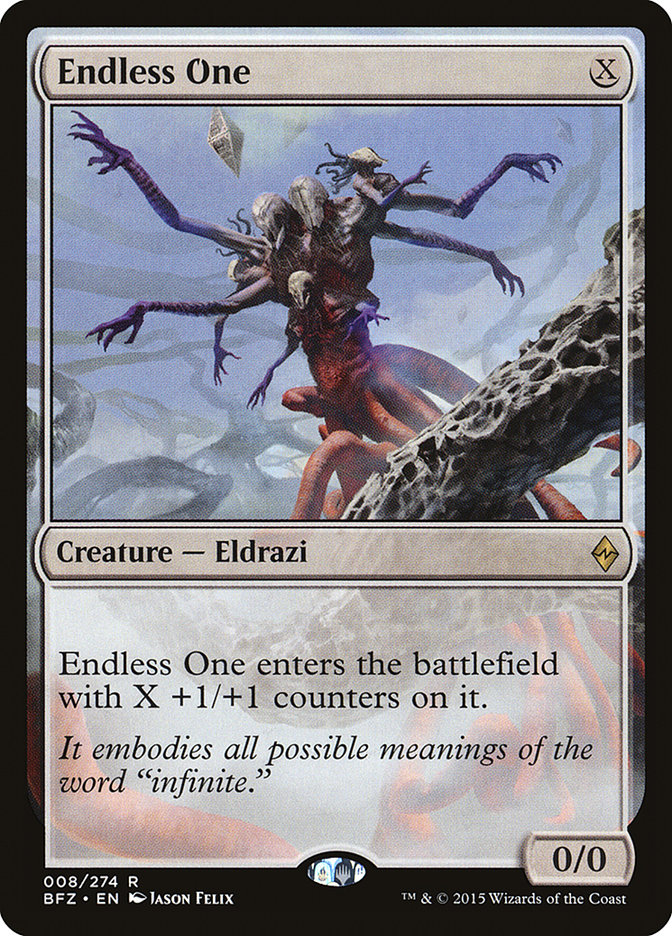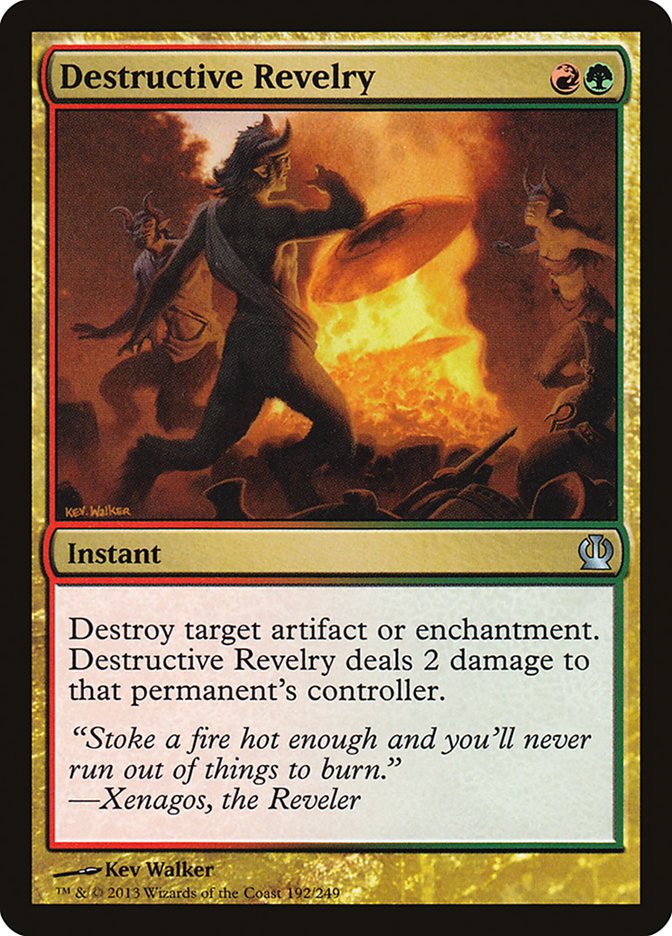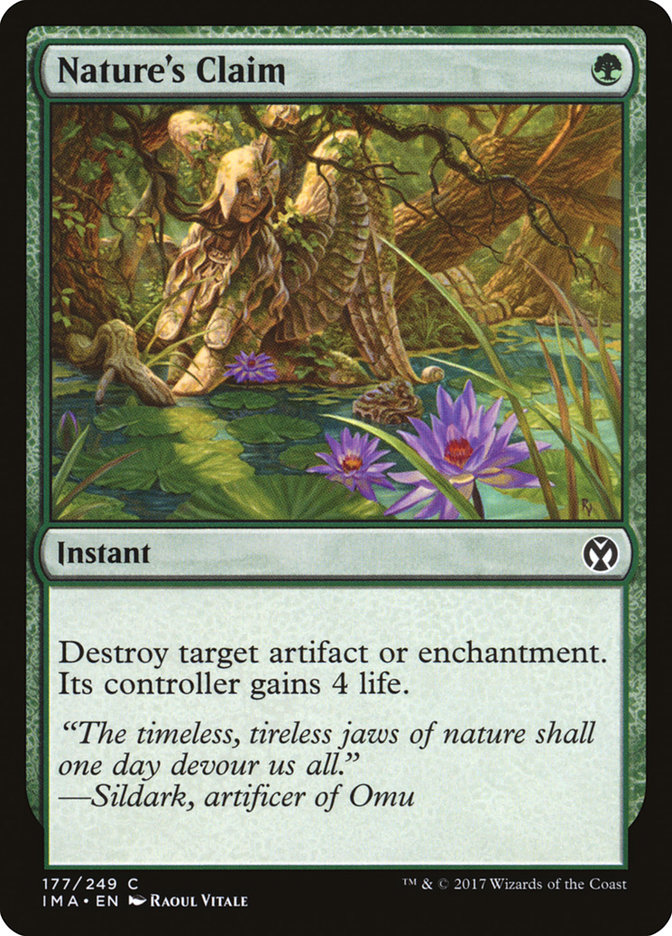Pro Tour 25th Anniversary is officially in the books and I teamed with
Gerry Thompson and Josh Cho for this one. I’m not going to go into detail
about our record, or how we did relative to Shaheen Soorani, or anything
like that. That’s really not important. Instead I’m here to talk about the
Modern deck we should have played.
Creatures (33)
- 1 Greater Gargadon
- 2 Bloodghast
- 4 Goblin Bushwhacker
- 4 Vengevine
- 3 Viscera Seer
- 4 Gravecrawler
- 3 Hangarback Walker
- 4 Insolent Neonate
- 4 Walking Ballista
- 4 Stitcher's Supplier
Lands (17)
Spells (10)

The release of Core Set 2019 and the introduction of Stitcher’s
Supplier opened new doors for graveyard strategies in Modern. Stitcher’s
Supplier doesn’t just allow you to fill your graveyard and trigger
Vengevine’s ability on the cheap. It’s also a Zombie for Gravecrawler,
which complements both Vengevine and Bridge from Below. R/B Vengevine had
already gotten some attention in the last few weeks, but the Pro Tour put
it into the spotlight.
R/B Vengevine is an aggressive graveyard-centric deck that attempts to
generate at least four power on the battlefield on turn 1 or 2, and then
tries to push that advantage even further while the opponent is still
playing catch up. It does this either by using the deck’s namesake card,
Vengevine, or by creating an army of Zombies with Bridge from Below, along
with multiple zero- or one-mana creatures to enable them. These two threats
also happen to be fairly resilient to disruption, at least in game 1.
In practice, R/B Vengevine exists somewhere in the space between Hollow One
and Dredge. It’s more reliant on the graveyard than Hollow One, and without
the reach provided by Conflagrate, it gives up some of the mid-lategame
inevitability of Dredge. In exchange, it’s able to very quickly and
consistently produce a huge battlefield advantage on turn 2 or 3.
R/B Vengevine is capable of creating some completely absurd gamestates,
especially in the early turns…
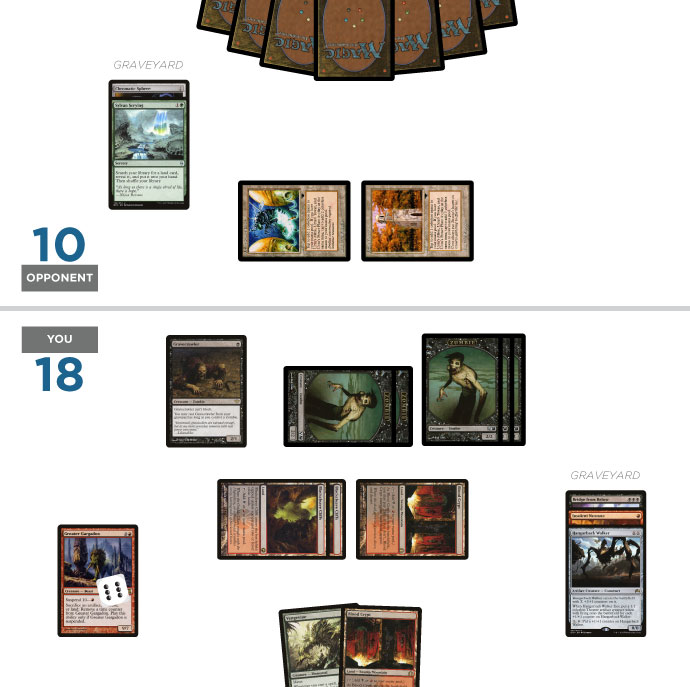
Not bad.
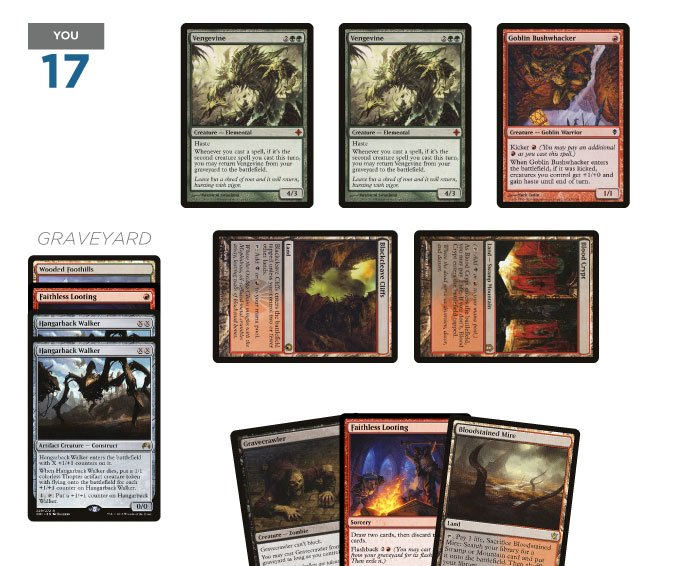
This is a turn 2 kill.
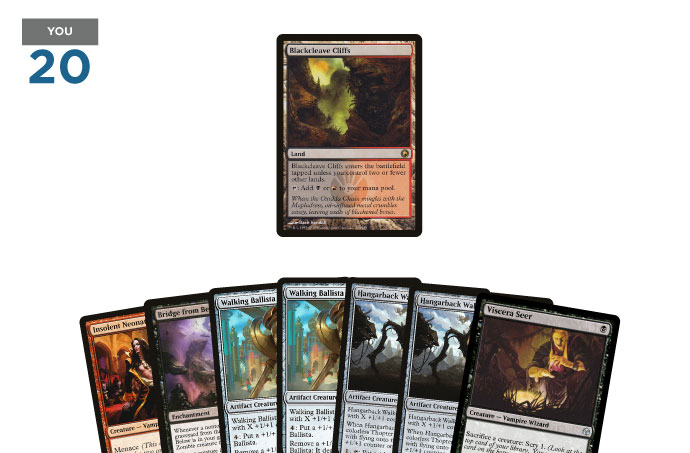
A casual ten power on turn 1.
You might want to give R/B Vengevine a try.
The best starts generally involve either Faithless Looting or Insolent
Neonate along with Vengevine or Bridge from Below. The power of Faithless
Looting has already been on display in Modern for some time, but the
Neonate-enabled draws are also impressive, since Neonate + Vengevine or
Bridge + any zero-mana creature gives you at least four power on the
battlefield on turn 1.
Games generally play out slightly differently depending on the type of
threat you produce. Games with Bridge from Below often start out a little
slower than those with Vengevine, but they give you a stronger and more
resilient threat engine. With Viscera Seer, Greater Gargadon, Gravecrawler,
and Bloodghast, even a single Bridge from Below can let you quickly
generate an army of Zombies. With two Bridges, you can do some truly
disgusting things.
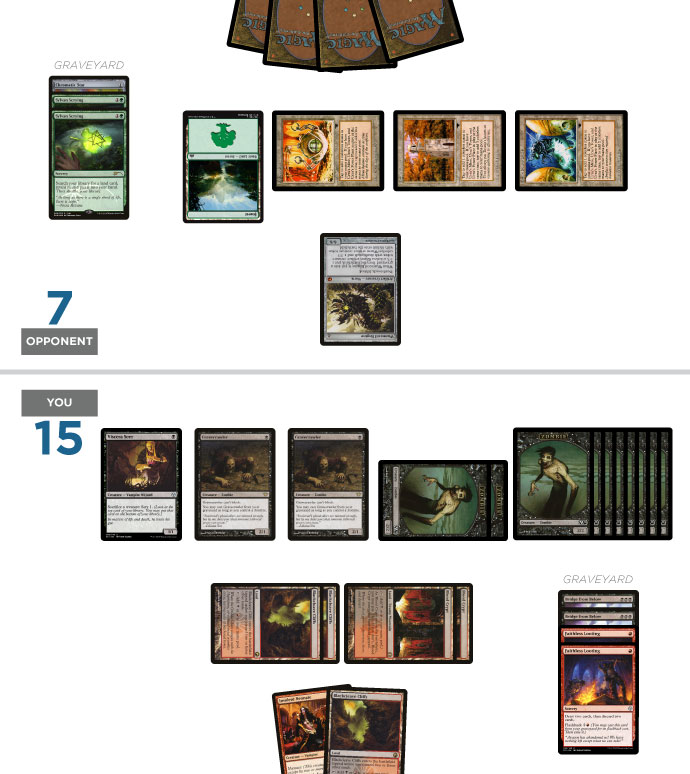
This is turn 4.
If the eight Zombie tokens on the battlefield aren’t enough, note that I
can just spend a single black mana to make two more Zombies, and I can do
this as many times as I’d like. I even get a scry out of it, although the
only card I’m even remotely interested in at this point is Goblin
Bushwhacker. Here, I obviously don’t need it, but just a note that in
general, Bushwhacker has been really impressive with Bridge and usually
ends the game on the spot.
If you’re reanimating Vengevine, you’re usually going to be better at
ending the game quickly than if you’re making Zombies with Bridge from
Below. Since you can typically expect your Vengevine to die at least once,
you’ll want to refrain from casting your last one or two creatures right
away. With these draws, you’ll generally be spending turns 3 and beyond
finding more Vengevines and Bridges just in case your opponent survives the
initial assault.
Different Ways to Build
The archetype is relatively new and a consensus on the best build hasn’t
been reached just yet. From the iterations we do have, the core of the deck
is something like:
8 Graveyard Payoffs
8 Premium Discard Enablers
6-7 Zero Mana Creatures
- 4 Walking Ballista
- 3 Hangerback Walker
4-5 Sacrifice Outlets
6 Recursive Sacrifice Fodder
Other Necessities
Mana
- 17 Lands
That leaves us only a little room to play around. In my experience, the
most common failure mode is lack of a discard outlet, since you want
something to help you get Vengevines and Bridges into your graveyard.
Initial builds were running Corpse Churn, but I wasn’t impressed when I
played them. Self-mill is not reliable when you’re trying to plan out your
turns, and two mana is significantly more than one. It does return a
creature from the graveyard, so it helps you set up your engine for future
turns, but with this deck I’m just looking to kill quickly and the Viscera
Seer/Greater Gargadon + Gravecrawler/Bloodghast already gives you a
powerful engine with which to grind.
Looting effects are also better than self-mill in sideboard games as they
help you find your sideboard cards and allow you to ditch useless cards
like Leyline of the Void. They also let you discard Vengevine and Bridge
from Below in the face of an opposing Leyline. The deck is weak to
graveyard hate and any way to mitigate that in sideboard games is welcome.
The most popular option for an additional discard outlet is Cathartic
Reunion. Two mana is a huge downgrade compared to one, but it still gets
the job done. Lightning Axe is an alternative, but since it requires that
there be a creature on the battlefield before you can cast it, Cathartic
Reunion gets the nod. You don’t want to play something like Burning Inquiry
or Goblin Lore here since they don’t reliably accomplish what you’re
looking for.
This last weekend, Eric Severson showed up with Bloodrage Brawler in this
spot, which seems like a great way to accomplish what we want while at the
same time giving us a 4/3 body for some insurance against graveyard hate.
Bomat Courier is another option, as it has a high ceiling in terms of power
level and it triggers Vengevine itself, but the cost of discarding your
entire hand is steep. After you put a Vengevine into the graveyard, you’ll
still need some way to trigger it, which means that, unless we have
Gravecrawler, we’ll probably need to put at least a few cards under Bomat
Courier to give us a chance of drawing a cheap creature. If what we really
want is an inexpensive and fast discard enabler, Bomat Courier doesn’t
really get the job done.
Collective Brutality also sometimes shows up here. This seems more like a
metagame-dependent call, since it’s less effective at setting up your
engine. Depending on what you expect to face, it might be right, but for
the moment I’m keeping mine in the sideboard.
The standard configuration for zero-mana creatures includes Walking
Ballista and Hangarback Walker. Most of the time, their text doesn’t matter
since you’ll just be casting them for zero mana to trigger Vengevine or
Bridge from Below. At first, I was tempted to play the fourth Hangarback
Walker before I added the first Walking Ballista. Walker can be extremely
good against grindy strategies without access to Path to Exile, whereas
Walking Ballista has less of an impact in the matchups where it’s good.
It’s better against Affinity, as well as decks that rely on Birds of
Paradise or Noble Hierarch. Ultimately though, Ballista is the better of
the two, since it doesn’t require the graveyard to function.
Nathan Holiday played Endless One at the Pro Tour, and although I haven’t
had a chance to try it yet, it seems great. Your opponents will
occasionally keep otherwise anemic hands that include Leyline or Rest in
Peace, so a 4/4 on turn 4 can occasionally cause trouble and since it’s not
an artifact, it won’t power up opposing Tarmogoyfs. Additionally, in the
mirror your opponents might sideboard some number of Destructive Revelry,
and Endless One is immune.
Jacob Nagro eschewed Viscera Seer entirely in favor of four copies of
Greater Gargadon. Although Gargadon doesn’t help trigger Vengevine, it’s a
real threat in and of itself and can give you a way to win without using
the graveyard. It’s not great in multiples though, so for now I’m sticking
with the split.
The biggest variation among sideboards is whether you want to try to fight
Leyline of the Void directly. To do that, you need to play green. You can
play Destructive Revelry or Nature’s Claim, though I think that Revelry is
the best choice since your opponent’s life total is relevant enough that
the extra mana is worth it, especially since sideboard games tend to be
slower than game 1.
The cost to adding green isn’t that high, as it’s just a single Stomping
Ground over a Blood Crypt. I tried adding a second Stomping Ground so that
I could just cast Vengevine, but so far, I’m not happy with that change.
Drawing Stomping Ground isn’t ideal, and you often want multiple black mana
early in the game. That means that you’ll have to spend multiple turns
fetching later in the game when you could be discarding those lands to try
to find a Revelry.
Tips, Tricks, Notes, and General Guidelines
You’ll often be asked to choose between either cashing in your zero-mana
creatures for Zombies right away or waiting a turn to see if you can get a
second Bridge from Below into the graveyard. Unless I already have second
Bridge in my hand with another way to discard it and I have the ability to
make at least two Zombies anyway, I default to making the Zombies
immediately. R/B Vengevine plays as less of a combo deck and more of an
aggressive deck with the potential for absurd starts. I just want to get
some power onto the battlefield and start clocking my opponent, and then
figure out how to go bigger on my next turn.
You maybe have to choose between creating one Vengevine or two Zombies, for
example, with this hand:


In the dark, I go for the Zombies. A single Vengevine is softer to
Lightning Bolt or Path to Exile, and getting Bridge from Below into your
hard can help you set up a stronger engine going forward. For instance, if
I draw Viscera Seer or Greater Gargadon, I’ll be happy I went with the
Bridge.
Remember that if you have access to a sacrifice outlet and an active Bridge
from Below, you should probably be sacrificing your Bloodghasts at the end
of your opponent’s turn. This way, the Zombie that you create will not be
summoning sick on your next turn, so if you need to play a land before
combat, then you can get more value out of your Bloodghast.
If you have a sacrifice outlet available and an active Bridge from Below,
you have the option to attack with an army of Zombies and sacrifice
anything that might kill an opposing creature to preserve your Bridge.
Additionally, if you have Bloodghast or Gravecrawler, there’s little
downside in attacking into a larger creature.
If you, once again, have a sacrifice outlet and an active Bridge from
Below, you can cast Goblin Bushwhacker with kicker, then in response to the
Bushwhacker’s enters the battlefield trigger, you can sacrifice the
Bushwhacker to create a Zombie. The trigger will resolve after the Zombie
is created, netting you an extra point of damage. This will usually be
unnecessary, but it’s still valuable for extra rub-ins and helps to show
off how smart you are.
If your list includes Bomat Courier, remember that the “discard your hand”
portion of its ability is a cost, and not part of the effect. This means
that if you have two copies on the battlefield, you can sacrifice the
first, hold priority, and then sacrifice the second in response to keep all
of the cards underneath both. You can also cast Cathartic Reunion or
activate Insolent Neonate and then respond by sacrificing Bomat Courier to
get maximum value.
Looking Forward
It’s going to be interesting to see where things go from here. A looming
question is how this deck compares to Hollow One. Both decks occupy a
similar space in Modern, so depending on how the format develops you might
see one overtake some portion of the other’s metagame share. There’s no way
to know for sure what will happen. The best we can do is try to figure out
when it’s right to play one over the other.
R/B Vengevine gives us a faster clock with a higher potential for absurd
turns in the midgame. Bridge from Below allows us to go wide, which means
that unlike Hollow One, we can often ignore our opponent’s gameplan since
we won’t get bricked by a Gurmag Angler or 5/6 Tarmogoyf as often. In
addition, our threats are more resilient than Hollow One’s. If Modern were
a complete vacuum devoid of a metagame, I would play R/B Vengevine over
Hollow One.
The main benefit of Hollow One is that it’s more resilient to graveyard
hate. It uses the graveyard, but part of its plan A is just casting Hollow
One anyway. It also has a bit of maindeck disruption of its own in the form
of Burning Inquiry and Lighting Bolt gives it some interaction. If I expect
to see a lot of Leyline of the Void and Rest in Peace, I’d play Hollow One
before I sleeved up R/B Vengevine.


